“It’s about the freedom of imagining and it’s about everything which cannot be killed by contemporary society”
Giulia Cenci creates sculptural beings struggling into and out of life. Like feral beasts, they can be thin and sinewy. Like livestock, they can be plump, dismembered and displayed like taxidermy. More and more, Cenci places her creatures in silvery environments, in relationship to other pseudo-lifeforms, suspended in grids of cold metal. This work is clearly in conversation with other emerging sculptors and with climate activism, but Cenci is particularly mining ideas posed in the twentieth century, by Yves Tanguy, David Cronenberg, H. R. Giger and Lee Bontecou – artists offered shockingly new speculations on technological life. Cenci’s imagination, she says, has been stimulated by science fiction, and her practice has been a parallel process of world-building.
In her daily life, Cenci is fiercely independent, leaning towards the lifestyle of an off-the-grid doomsday prepper. She seems to have thrived in the pandemic, creating her most ambitious and widely seen installations yet, including dead dance (2021–22) at this year’s Venice Biennale, a 150-metre alley of hanging sculpture, inspired by agricultural equipment, and evoking the dread of an abattoir. Cenci is generally suspicious of urban culture, and she recently moved to the Italian countryside, where she is freeing herself of corporate food sources and industrial fabricators. On her farm, she has spent the last few years alternately living alone and opening her doors to a kind of intentional community. Along with these friends and coworkers, she is now at work on a summer camp, which will, among other things, teach people how to be sovereign.
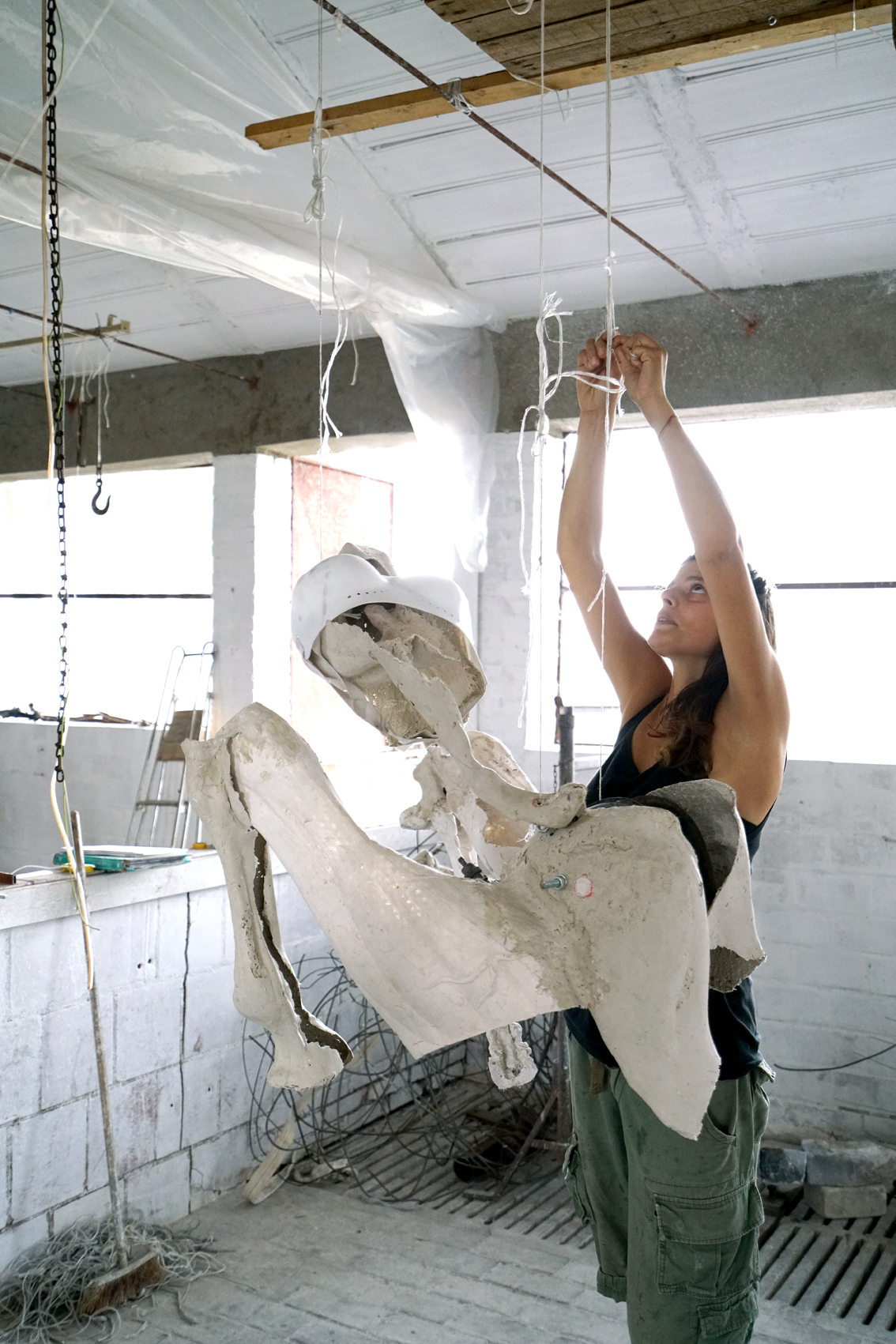
A Kind of Anarchy
Ross Simonini Where are you now?
Giulia Cenci I’m in the south of Tuscany in the countryside, stealing internet from a friend because I have no internet at home.
RS And you grew up in that region, right?
GC Yeah. I left when I was 15, and I went to a small city, Perugia, to study art. Then I went to Bologna for the fine art academy, and came back here after 15 years away.
RS Is your studio still in an old slaughterhouse?
GC Yes. It was a farm. My father moved here from the area of Milano in the 60s. His parents were intellectuals – the father a journalist and art critic, the mother an illustrator – so they had nothing to do with farming. But he decided to buy this piece of land, which was extremely cheap, and start a farm with animals and a plantation.
I moved back here because, when I had to produce the work for the MAXXI Bulgari Prize in 2020, I needed space. There was this stable, which was used for pigs and is quite big and very nice, and which had been empty for 20 years or so. So I decided to turn it into my temporary studio. There is also endless space outdoors. I can try anything. So I started my own foundry, where I melt aluminium. I use old car parts and everything is extremely cheap and easy to do, especially for me, because I like to do things by myself. The plan was to be here for a few months, but then I was kind of stuck because of many situations, including COVID.
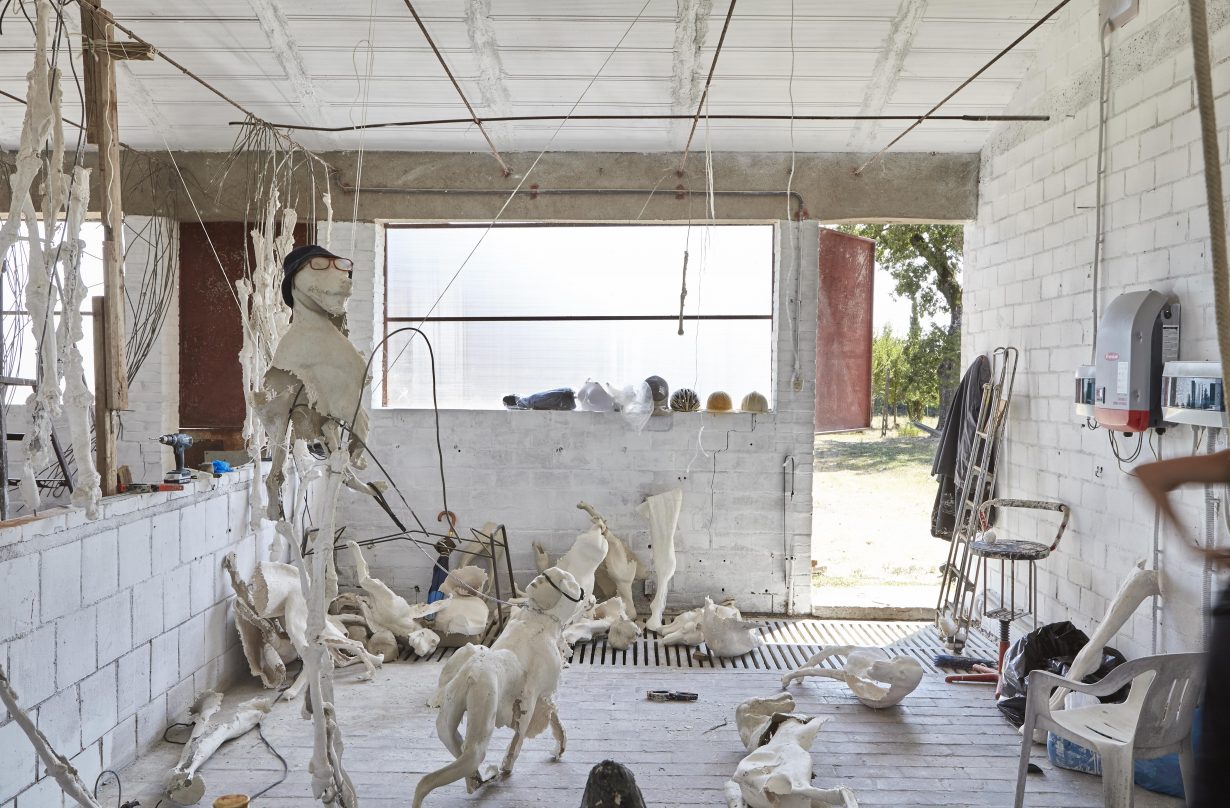
RS Are you alone out there these days?
GC The studio and the foundry are mine, but I had many people working with me. If anyone wants to melt, like, a piece of aluminium, they can just come here. Eventually this turned into a place where everybody lives together. We started to garden and eat together and have our own chickens. We wanted to be independent, especially in 2021. We can just use the food which is around us, and the same goes for the aluminium. We don’t buy pure aluminium, only leftovers. But after a while, the work became a little bit more insane in terms of production. So I moved away. I took a small house on the mountain, while the studio is in the valley.
RS How did you go about building this community?
GC The nice thing was that, because of the pandemic, the universities were all online. So the cities were all empty. And then through Instagram and other socials, I started to look for people who were based around here. And it became like a school, because if you didn’t know how to weld, we would teach you. You become quite independent in this sense, which I believe is nice. I personally really like to know how to do anything that is part of my process. And now we make everything at the place. We never ask third parties.
RS Independence seems to be a crucial part of your life and work.
GC Yeah, quite a lot. I mean, we live in a society which is trying to erase our own ability. We are overwhelmed by premade products, services and platforms which are telling us how to be, how to act, how our profile picture must be, or how incorrect our words or images can be. I believe that when you are isolated and able to do things yourself, you get a little bit of freedom, a kind of anarchy, which I think is quite necessary in these times.
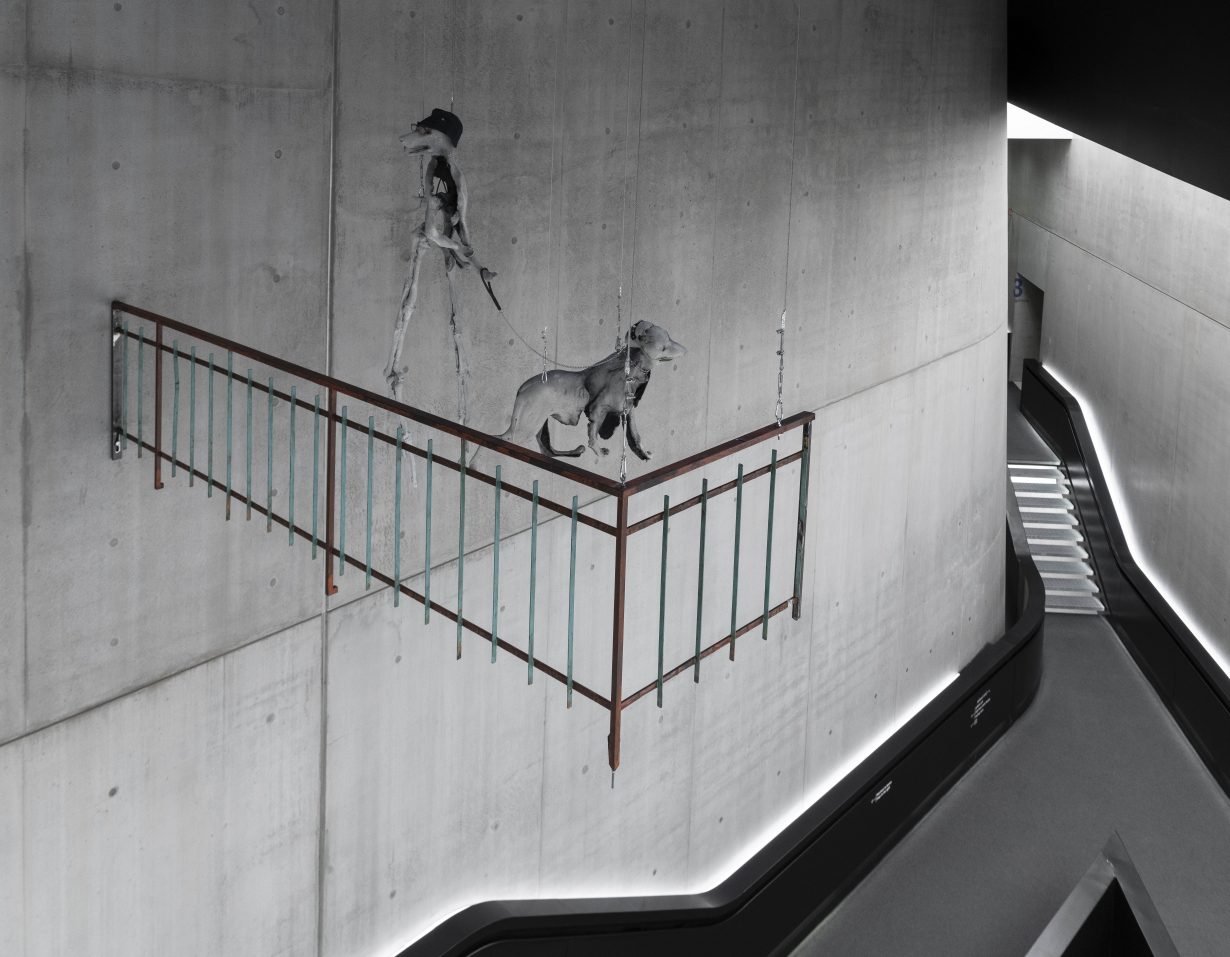
Organised Nature
RS The work has been expanding over the last few years. Your works lento-violento [2020] and the Venice piece are like sculptural communities, filled with many bodies and heads. Is this related to the communal way in which the work is being produced?
GC Absolutely. Recently I started to realise that I grew up in a very rural environment, but rural in a sense where nature is manipulated by humans.
So it’s organised nature. I will never forget the first time I went to Milano by car and I saw buildings and I thought, OK, this is truly weird. And then I started to realise there is all this huge infrastructure around me, which is the city itself, with so many rules and constructions, which is gonna make my life somehow quite precise. And the cities are also full of this animal population, called pets, and all of a sudden, a piece of nature becomes another product. And then you got your dog, and this dog is just amazing because this is your own dog.
But we’ve forgotten the wild side of our behaviour. And I started to wonder a lot about how to create kind of wild habitats, and how
to make environments which are not so divided into animal, human and object. I wanted to build up, not just like an object, but an environment, because I felt so, uh, disconnected. We create a difference between a pet animal, which is precious and necessary, and an animal that can just be killed. And we do the same with humans. There are humans who are more important or powerful or even who have a different value. And all of that made me try to think about a new population where these kinds of hierarchies are not so strong.
RS Do you dislike civilisation?
GC I just hate the idea that everything can just be a product, an economical value. And if it’s not sold, it’s trash. This makes me incredibly crazy somehow.
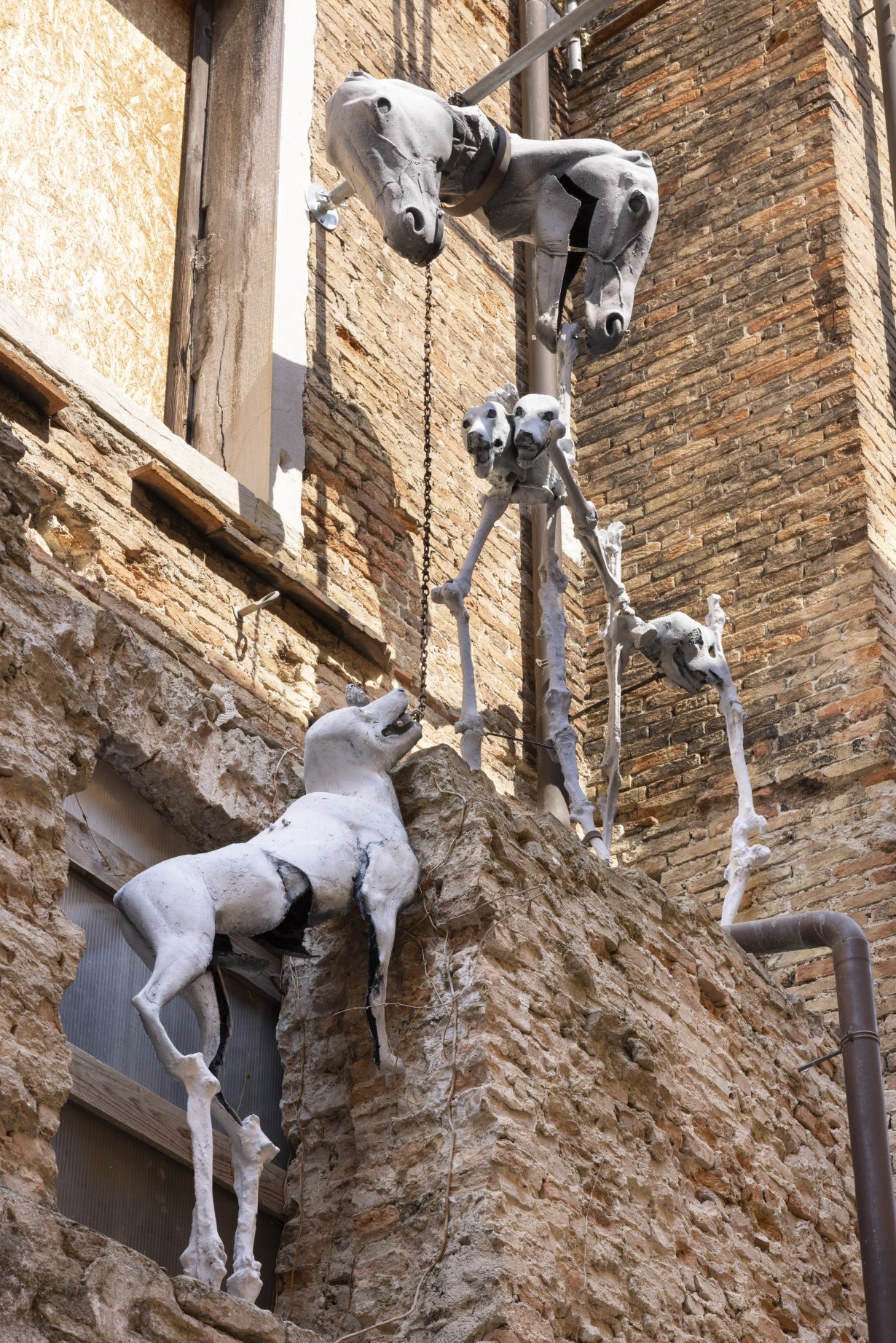
RS There’s a human hierarchy imposed on the natural world that you seem to hint at in the work: plants are lower than animals, and minerals are less than life. But, of course, minerals are at the foundations of life – and your work.
GC And what happens when you start bringing in things like plastic and things made by humans into that hierarchy? I really don’t understand the term ‘artificial’. I don’t get why the product of an animal is natural and the product of a human is unnatural. It’s really this attitude of bringing ourselves among all the rest. It’s imperialistic. Compared to us, minerals are inert. They appear still, but actually, if you look at them from an energetic point of view, something is moving inside, and this cannot be defined as stillness. And they also come from life.
Plastic, too. What I always love to think about with plastic is that to make it we need oil, and oil is made by probably the oldest forest of this planet, which in thousands and thousands of billions of years became oil. So when I see a plastic bag moved by the wind, I have to think about a little piece of that forest.
So I guess we need to rethink categories. This is also something which, to me, became quite clear from making sculpture. It’s always the same. We are all made of the same thing. It’s incredible. And if we look at our home environment and ourselves from a very distant point of view, you see that this is even more evident. You can see it even by looking at the landscape. The plant doesn’t exist if there isn’t an insect. This is something that you learn at elementary school. Life is interdependent.
RS Do you think about the longevity of your work in these terms? What will your objects become when nature swallows them back?
GC I really like to think that at some point things will merge. But I also could never really work with bronze because for me it feels just too endless, you know? It’s so related to this idea of making a monument or making something which has to last forever. Time in the work is quite funny because we compare it to our own life. So if something is gonna last more than, like, 80 years, this is a long-term piece. But actually if you look at life on Earth, that’s nothing. Even plastic is turning into something else and is gonna be eaten and is already in our water system. So it’s all related to our own point of view, which for the planet is almost nothing.
RS Right, a lot of the dialogues around climate change are about the ‘planet’ in an abstract sense, which I think confuses the idea for a lot of people. The real conversation is about humanity hurting itself.
GC Yeah, it’s like a suicide. I don’t think the planet is really gonna have a problem by turning into something else. Maybe we are gonna see the end of our own civilisation or the end of certain kinds of lives, but that doesn’t mean the planet is gonna die.
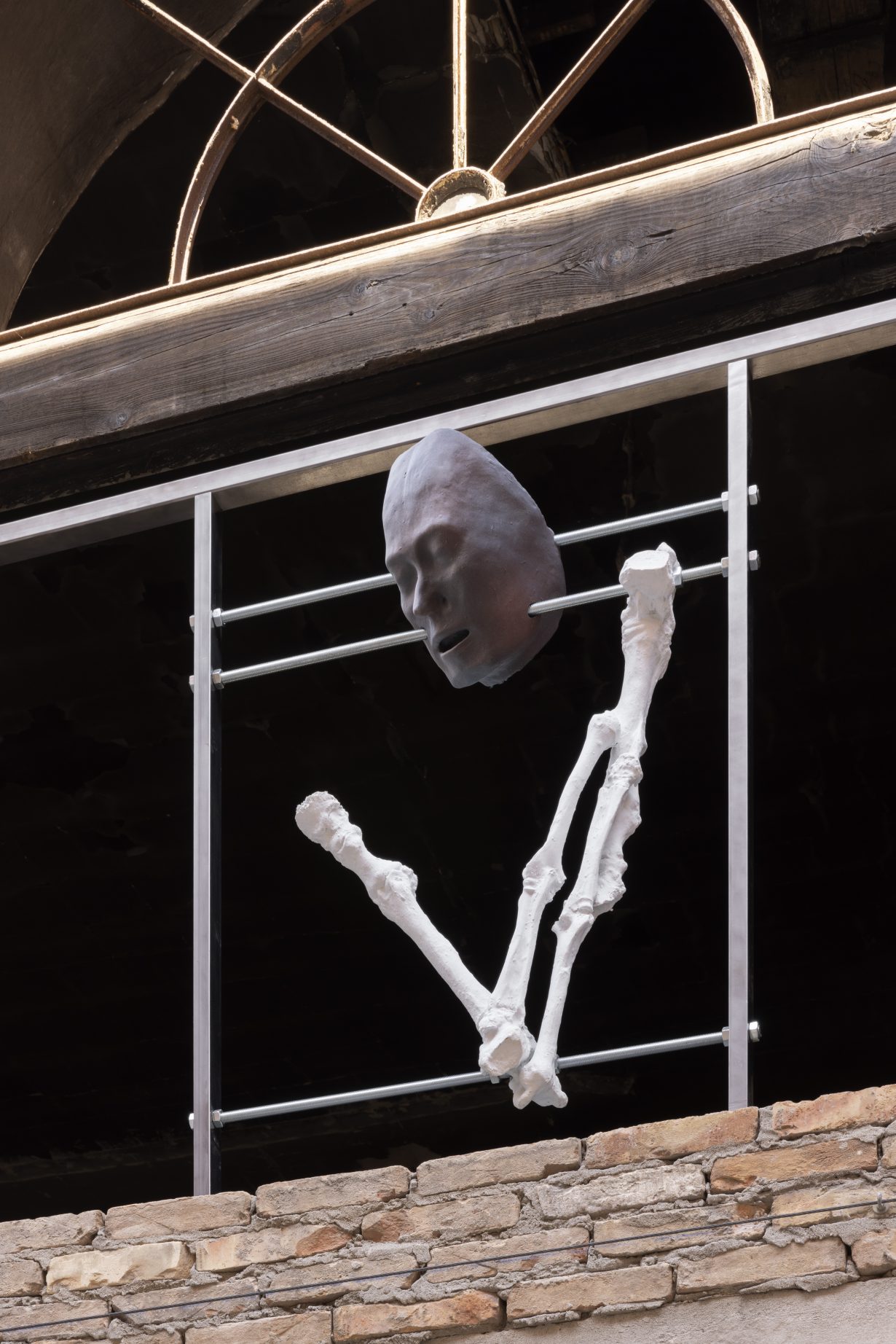
Pathetic and Beautiful
RS Are you interested in using your work to evoke certain feelings about nature in people?
GC I’m not sure that mine is a precise message. It’s not an answer to anything, nor a definition. For me, sometimes the feeling comes from behind your neck or in your belly. It’s about the freedom of imagining and about everything which cannot be killed by contemporary society.
RS Is this the same kind of thing you’re looking for in other works of art?
GC I like art that is capable of letting me travel and abandon my own life, to bring me to another habitat. If I think about my favourite movies – Tarkovsky’s Solaris or [Yorgos Lanthimos’s] The Lobster – those are all situations where I experience a new world in which rules are destroyed and new rules are made by the artists.
RS Do you read much?
GC I love poetry. One of the most important books of my life has been The Waste Land, by T.S. Eliot. It’s a book which is able to get
so much material from others and put it together to create a new narration, which leaves you so open, and so able to put yourself in it. It’s so experimental for me. I also love science fiction.
During COVID I enjoyed The Scarlet Plague, by Jack London, a pretty amazing short book. He’s talking about the end of culture from a fever, and actually what happens in the book is that the people who are gonna survive this fever are the ones away from the cities, who didn’t go to school or didn’t really have a cultural life. So they’re all super wild people, and they’re gonna grow this new society where they don’t even believe that something like a university should exist. But then there is this old man who survived who was a teacher at university, and he’s trying to tell people about painting and philosophy. He is both pathetic and beautiful, and for me there is a character like this in many of my works.

RS Your work is often described as apocalyptic and dystopic. How do you actually conceptualise a word like ‘apocalypse’ at this point?
GC I think it’s something that refers to another period of human history, but not now. I mean, I remember when the Twin Towers collapsed and I was watching television and I could see it in front of my eyes. I was twelve years old. And I called my mom and she couldn’t believe it, because she was like, “You cannot watch this on television. It’s fake,” and I was like, no, Mama, I think that’s real. It’s like everything is so present. And even when things are very bad, we are watching it from a screen. And this isn’t the apocalypse, because you cannot get at it as an event.
RS Is your art ever politicised as a tool in the climate-change conversation?
GC To be an artist is already quite political to me, because I really had to decide on it. There were no artists around when I was growing
up and it was not something common at all. But I would have to go to church a lot with my parents, and when I saw paintings in church, these were the most meaningful experiences I’d ever had. It’s such a beautiful thing to me. You decide to make something that no one else is making. You try to add something to the human view. For me, this is political. If one of my works could do what those paintings did for me, that would be something.
